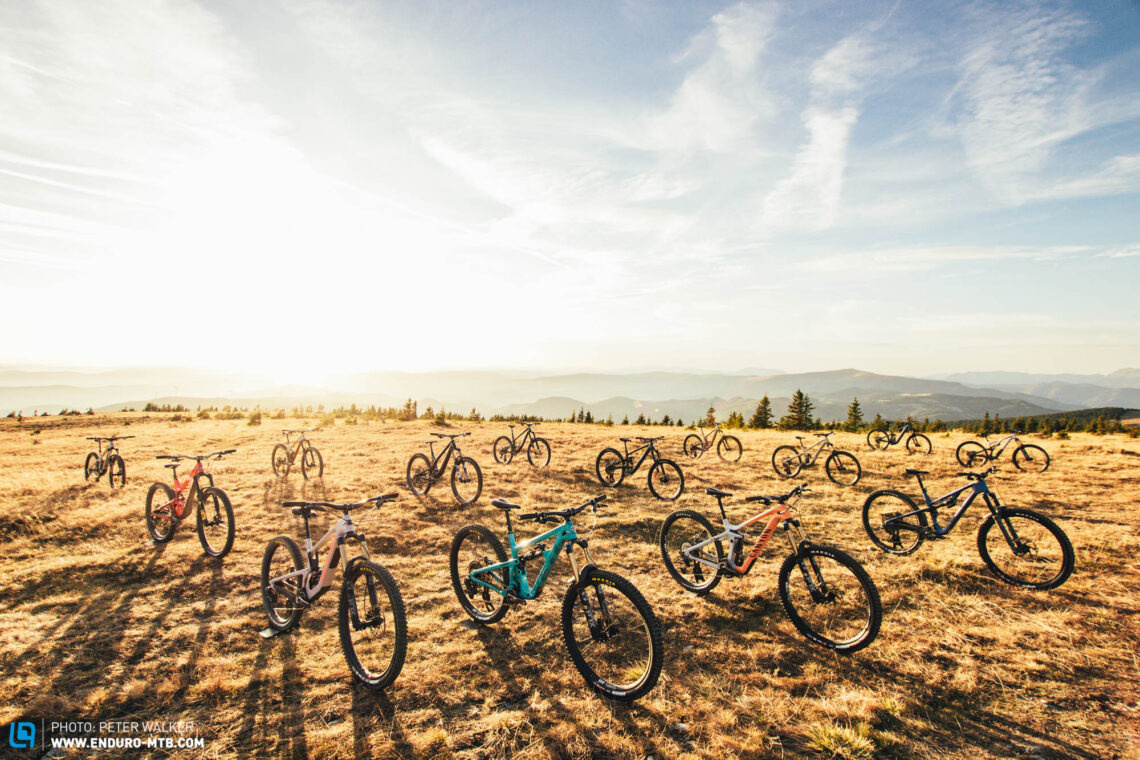The Deviate Claymore – In our big 2023 enduro group test
There’s a lot of hype surrounding high pivot bikes at the moment. That being said, Deviate have already been building high pivot bikes for the past six years. With the Claymore, the Scots have finally added a thoroughbred enduro bruiser to their portfolio. But can it live up to the hype?
For an overview of the test fleet head to the group test: The best enduro bike of 2023 – 14 models in review
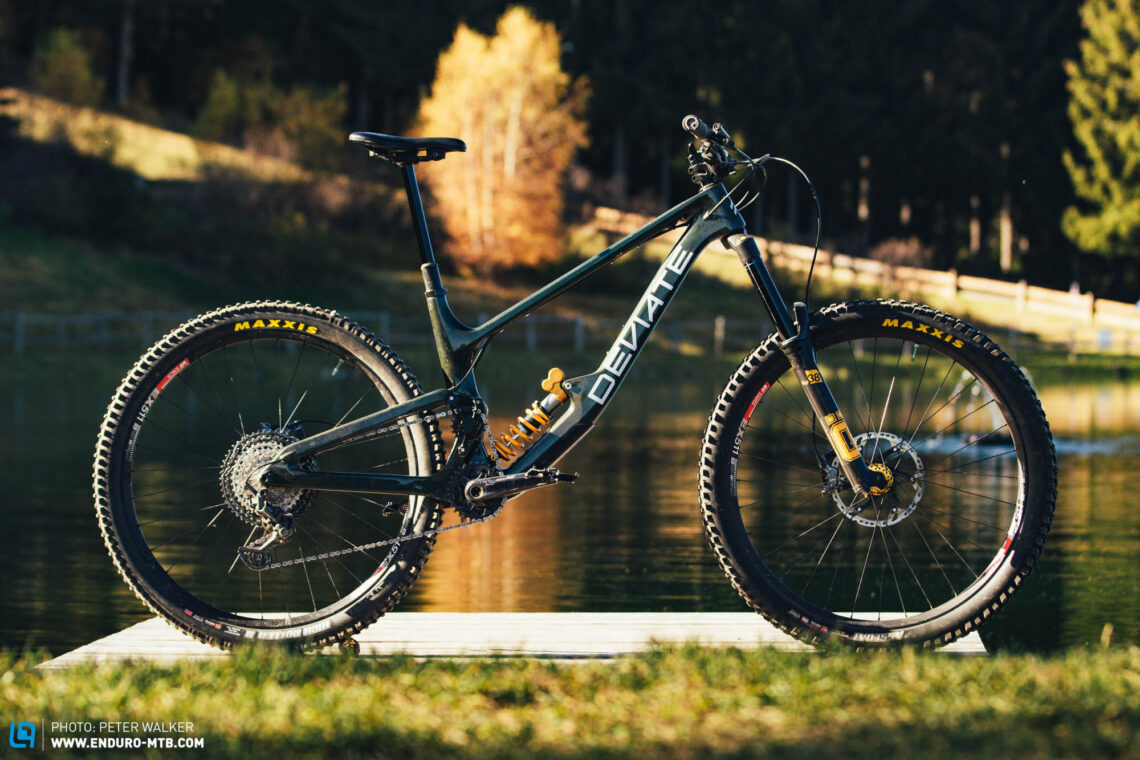
16.4 kg in size L | € 9,000 | Manufacturer’s website
Deviate is a small Scottish brand that exclusively builds high-pivot bikes. With this type of suspension design, the main pivot is positioned far above the top of the chainring, allowing the rear wheel to swing up, backwards and away from obstacles as the suspension compresses. The Claymore is the latest addition to Deviate’s line-up and combines 170/165 mm of travel, at the front and rear, respectively. It’s currently only available as a frameset or custom build, retailing at € 3,570 without shock. After choosing the frame size, colour and components from Deviate’s bike builder, you’ll be asked to click the “Send to Dealer” button at the bottom of the website. If you do, your configuration will be forwarded to your nearest authorised Deviate dealer, who will then send you a final quote. In the configuration we tested, the Claymore weighs in at exactly 16.4 kg.
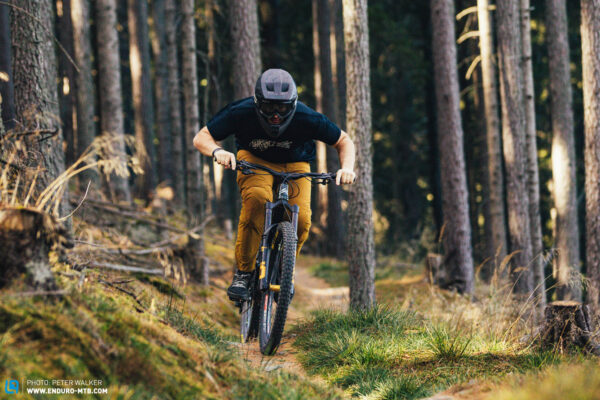
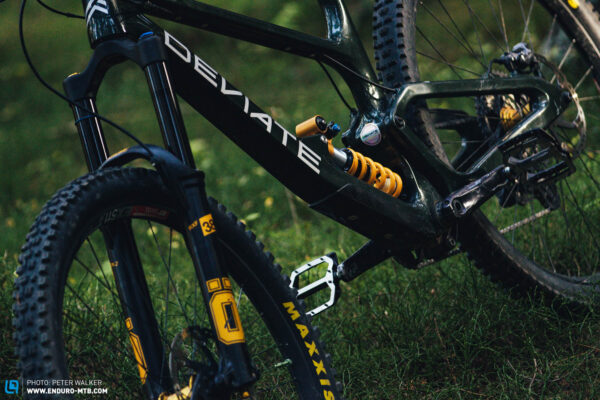
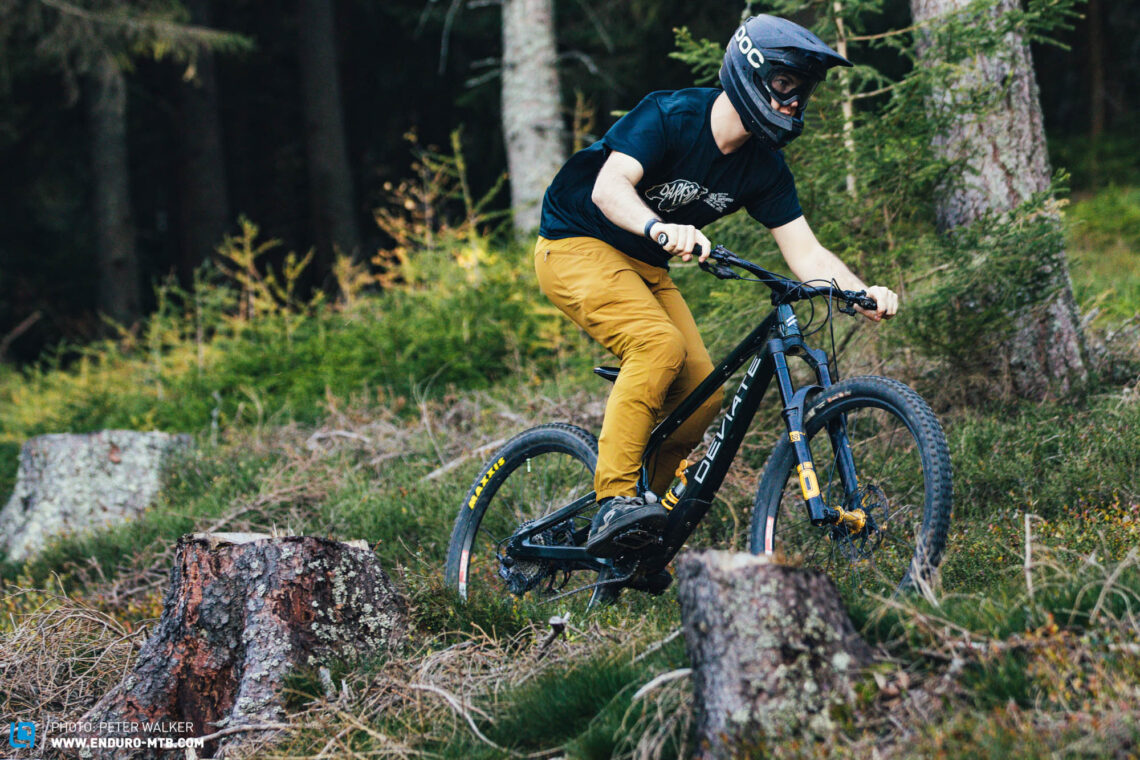
The Deviate Claymore 2022 in detail
The Claymore is the only bike in this test with external cable routing. The rear derailleur cable and rear brake hose run inside a recess in the top tube, which ensures a clean look, while the four cable clamp bosses also double as tool mounts. Deviate clearly proved that external cable routing isn’t necessarily synonymous with a messy or cheap look. The dropper post cable runs internally through the main frame but isn’t clamped securely, rattling loudly on the trail. Deviate says the problem will be fixed on the production bike, however. The alloy bracket supporting the idler pulley is neatly integrated into the frame, ensuring a discreet and elegant look. A robust, bolted downtube protector shields the frame from stray rocks while a TPU protector protects the bottom of the drive-side seat stay. However, the latter is rather narrow, causing the chain to slap against the seat stay and chip the paint – we recommend adding a good portion of mastic tape.
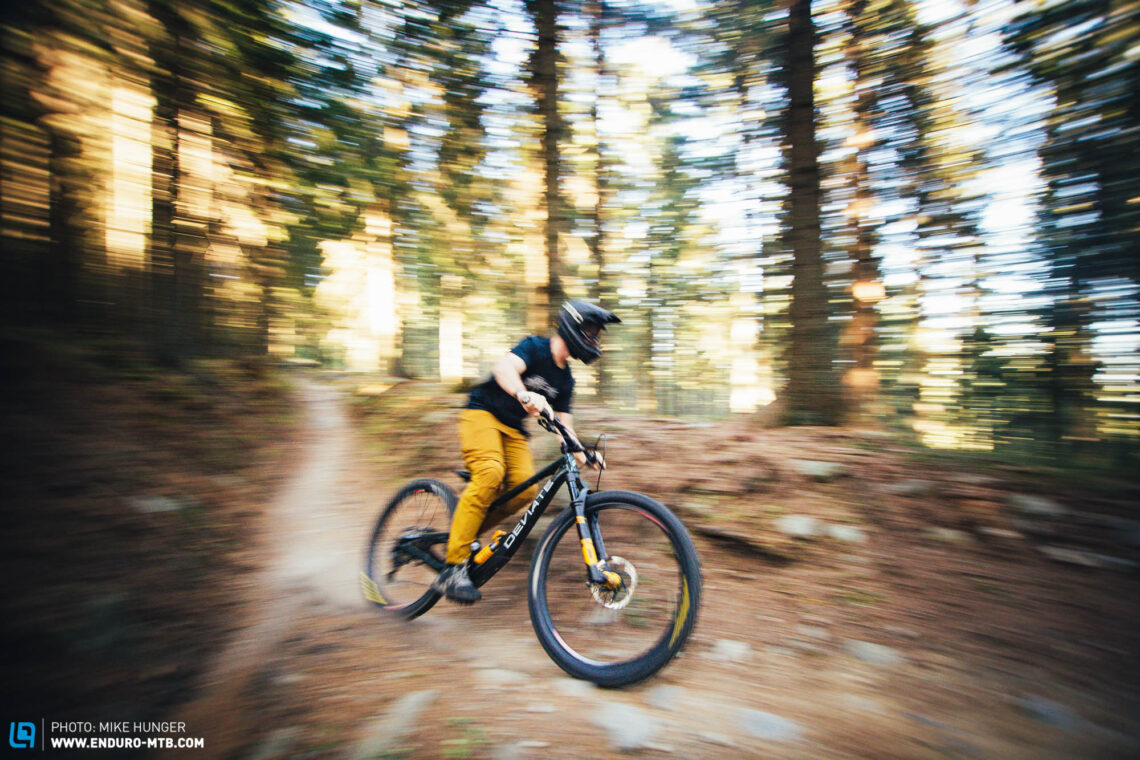
The plush rear suspension of the Claymore makes it hard to generate speed by pumping through rollers.
The spec of the Deviate Claymore 2022
As Deviate don’t offer any off-the-shelf configurations, we asked them to spec what they thought was the best fit for the bike. For this test, Deviate opted for an Öhlins RXF 38 M.2 fork with two chambers in the main spring, which might take a little longer to set up but delivers a tremendous performance on the trail and allows you to fine-tune the progression of the fork. The fork is paired with an Öhlins TTX 22 M coil shock, which makes the Claymore one of three bikes in this test with a coil shock. The OneUp Dropper Post V2 offers an impressive 210 mm travel while the matching remote provides excellent ergonomics. Shifting and braking are taken care of by a 12-speed Shimano XT drivetrain and matching 4-piston XT brakes with 200 mm rotors front and rear. The brake levers are attached to 800 mm OneUp carbon handlebars. Our custom wheelset consists of DT Swiss EX 511 rims and Industry Nine Hydra hubs and is paired with MAXXIS tires, with a 2.5” ASSEGAI in the EXO+ casing at the front and 2.5″ High Roller II with DoubleDown casing at the rear, both in the harder MaxxTerra rubber compound. However, MAXXIS’ softer MaxxGrip compound at the front would suit the Claymore better. That being said, Deviate delivered our test bike with a CushCore tire insert front and rear, which is a cool little touch, but we would choose a more robust tire with a tougher casing over a tire insert.
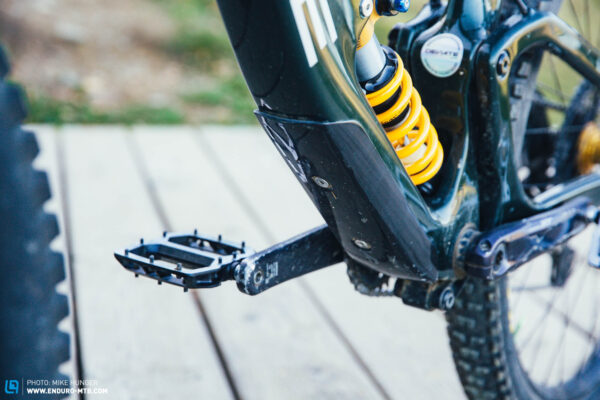
A massive downtube protector shields the frame from stray rocks and nasty impacts!
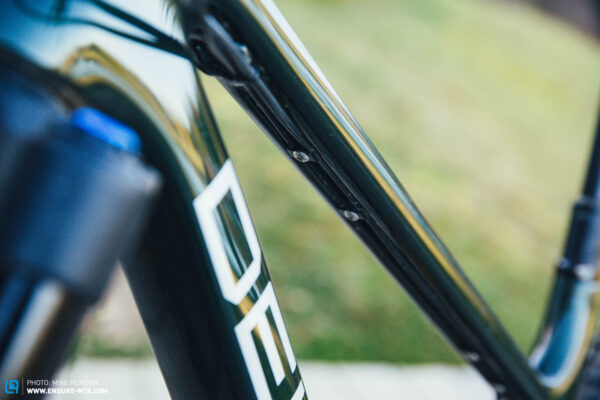
The Claymore is the only bike in this test to rely on external cable routing. However, the recess in the top tube ensures a tidy look.
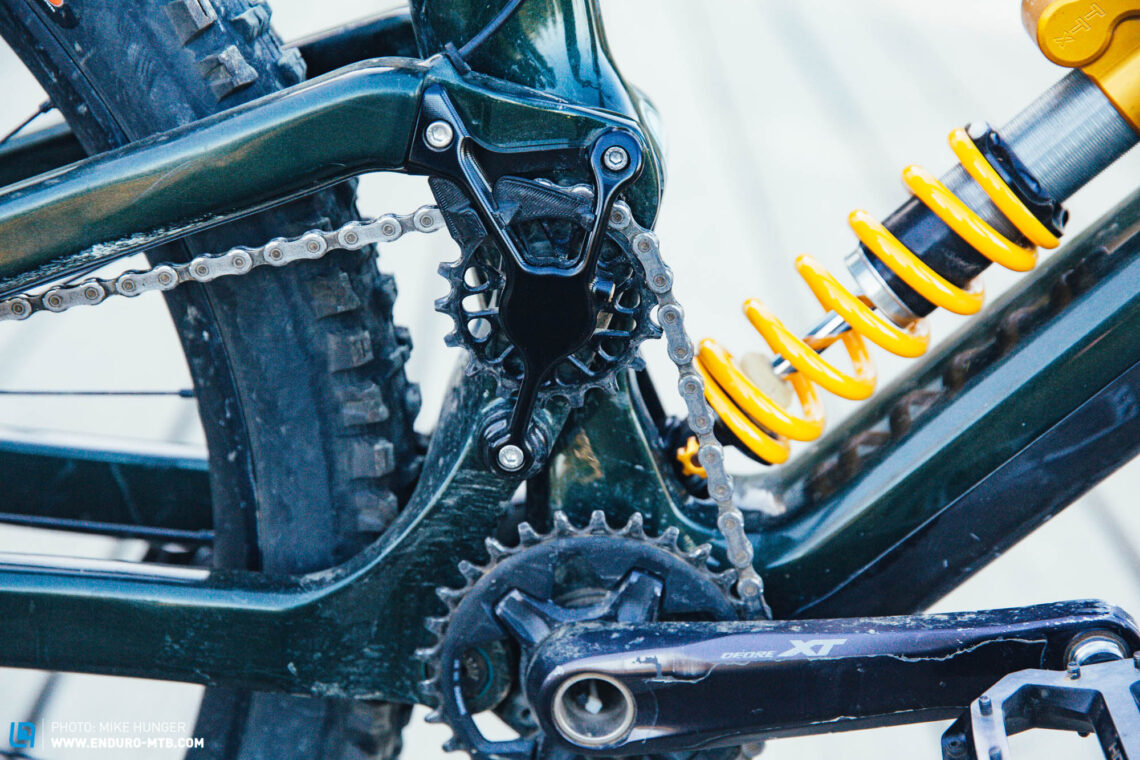
The alloy bracket supporting the 18 t idler is lovingly and neatly integrated into the frame.
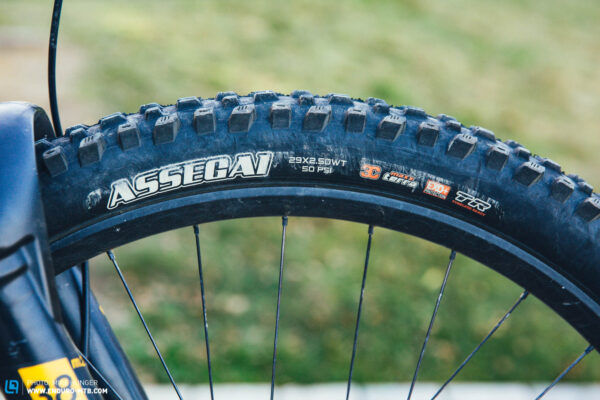
Using a CushCore insert front and rear allows you to run lower air pressures. However, we would choose a more robust tire with a tougher casing over a tire insert.
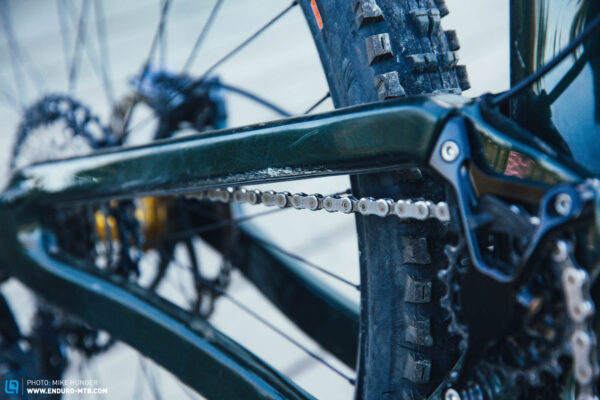
The thin seat stay protector only prevents paint chips to a certain extent. We recommend adding a healthy portion of mastic tape.
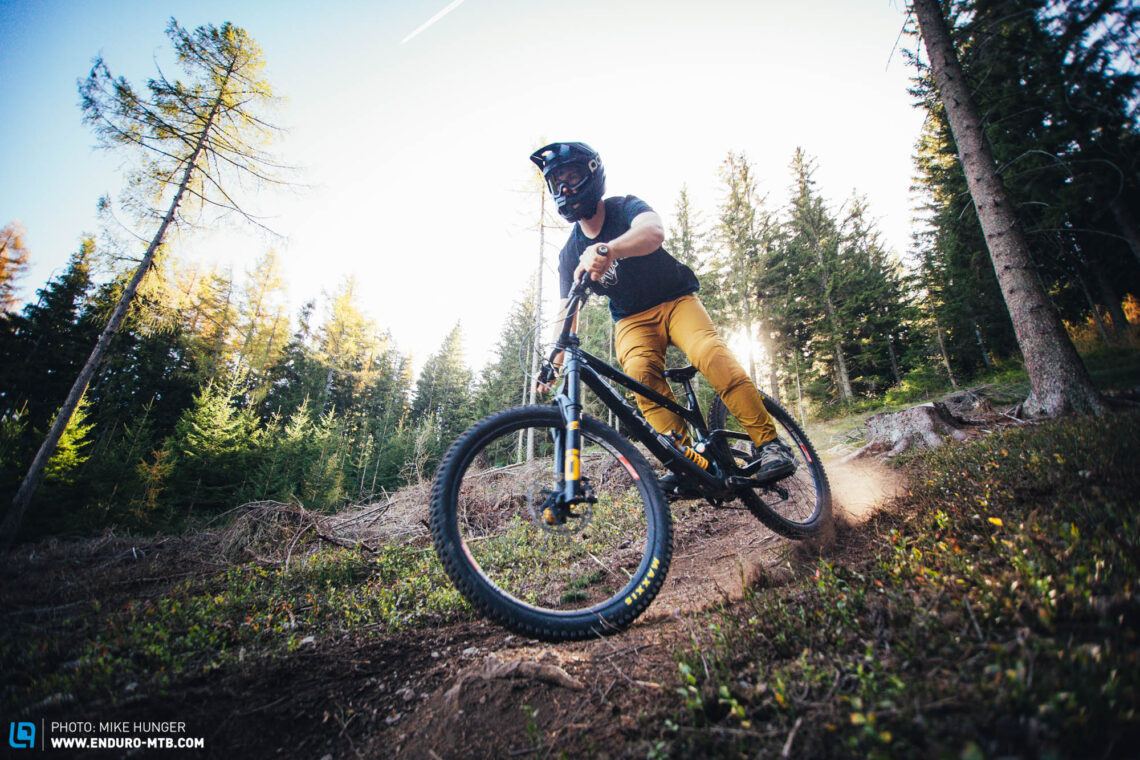
Deviate Claymore
€ 9,000
Specifications
Fork Öhlins RXF 38 m.2 170 mm
Rear Shock Öhlins TTX 22 M Coil 165 mm
Seatpost OneUp Dropper Post V2 210 mm
Brakes Shimano XT 200/200 mm
Drivetrain Shimano XT 1x12
Stem OneUp 45 mm
Handlebar OneUp Carbon 800 mm
Wheelset DT Swiss EX 511, Industry Nine Hydra 29"
Tires MAXXIS ASSEGAI, EXO+, 3C MaxxTerra, Cushcore/MAXXIS High Roller II, Doubledown, 3C MaxxTerra, Cushcore 2.5/2.5
Technical Data
Size M L XL
Weight 16.4 kg
Specific Features
online-configurator
Toolmount
The geometry of the Deviate Claymore 2022
Deviate offer the Claymore in three sizes, M to XL, catering for riders between 170 cm and 198 cm tall. In size L, the Scottish high-pivot bullet combines 490 mm reach and a pleasantly short 430 mm seat tube. On top of that, the long-travel dropper post can be fully inserted into the frame, meaning that the Claymore offers plenty of freedom of movement on descents. Chainstay length is 441 mm across the board while the seat tube and head tube angles measure 78° and 64.3°, respectively, which is pretty standard for a modern enduro bike. Deviate forgo a flip chip or other geometry-altering wizardries.
High pivot hype? As true worshippers of the high pivot point, Deviate stand up to the competition with one of the three high pivot bikes in our 2023 enduro group test.
| Size | M | L | XL |
|---|---|---|---|
| Seat tube | 410 mm | 430 mm | 450 mm |
| Head tube | 92 mm | 108 mm | 114 mm |
| Head angle | 64.3° | 64.3° | 64.3° |
| Seat angle | 78° | 78° | 78° |
| Chainstay | 441 mm | 441 mm | 441 mm |
| BB Drop | 30 mm | 30 mm | 30 mm |
| Wheelbase | 1,233 mm | 1,268 mm | 1,303 mm |
| Reach | 460 mm | 490 mm | 520 mm |
| Stack | 620 mm | 630 mm | 640 mm |
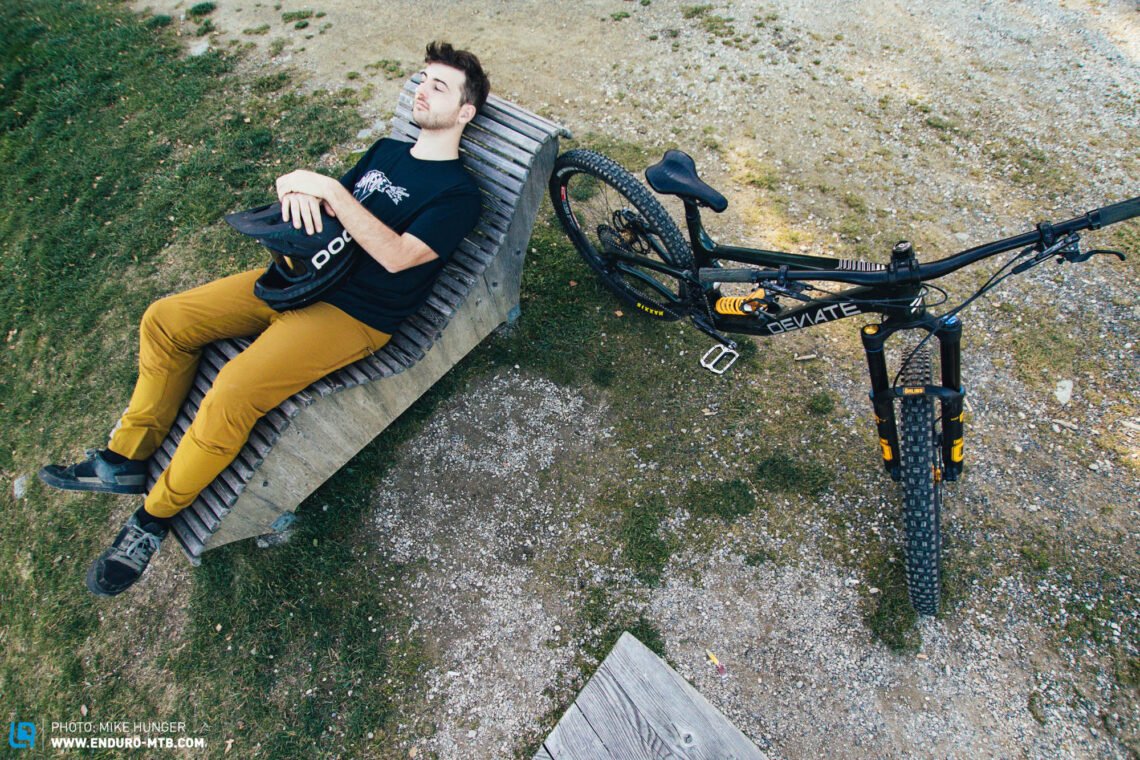
The Deviate Claymore 2022 on the trail
The Deviate Claymore puts you in a comfortable, central riding position and pedals fairly well, albeit with a slight bob which makes it feel somewhat less efficient than the Hope. That said, the Claymore still leaves the sluggish Norco behind on the climbs. For long climbs on gravel paths, we recommend activating the climb switch on the Öhlins TTX 22 M coil shock to stabilise the rear end. With that taken care of, the Claymore will get you to the trailhead without too much effort, unless you’re adventuring on more technical climbs, where the rear suspension lacks traction.
On the trail, the Claymore is nimble and precise but only really comes to life with active and experienced riders.

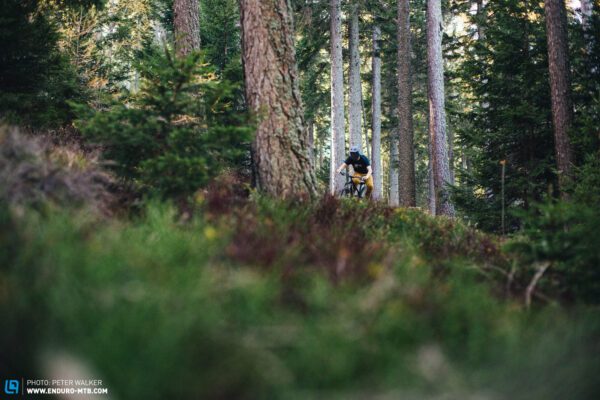
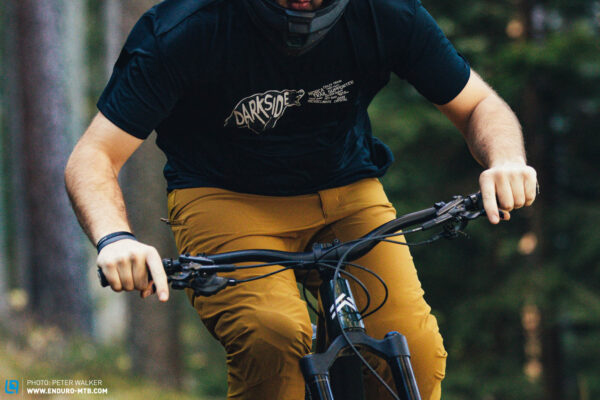
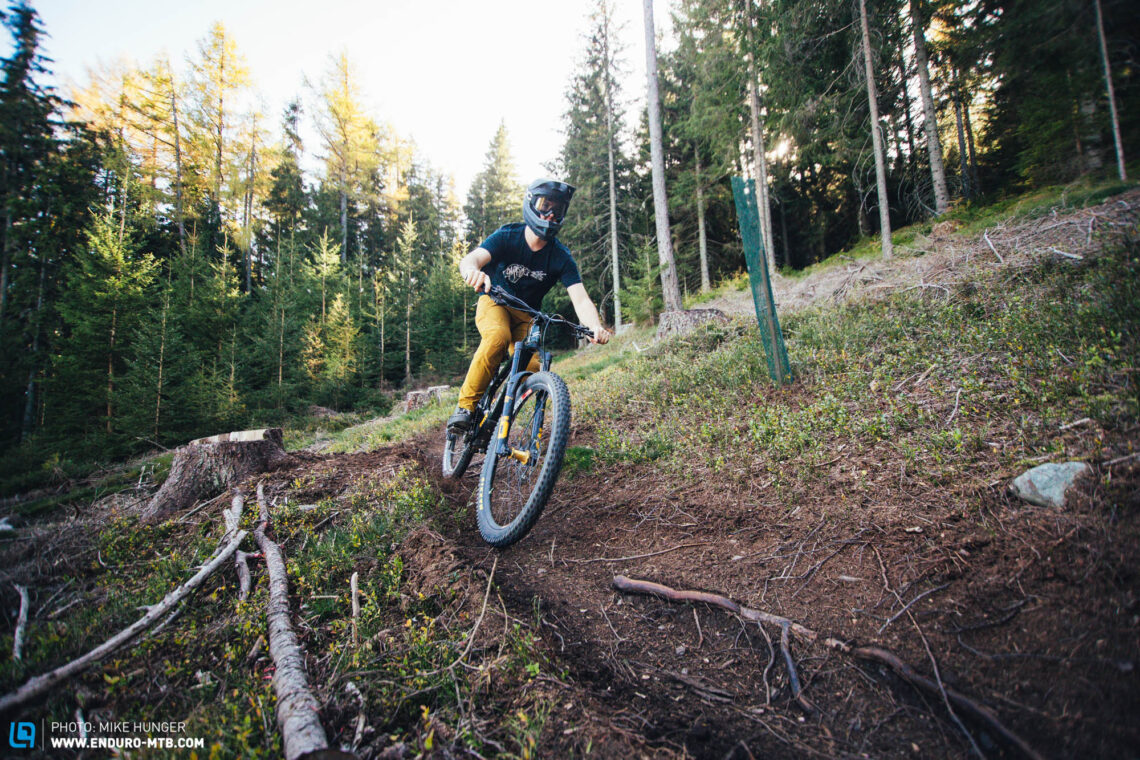
The Deviate impresses with precise and nimble handling and comes to life with an active riding style.
If we were to rank the three high-pivot bikes in this test based on their downhill performance, the Claymore would place right in the middle. The suspension of the Norco literally sucks itself to the ground and generates the most traction while the Deviate offers a decent mix of traction and support but is far more composed. Of the three, the Hope has the firmest suspension, which is great for generating speed through rollers and on climbs. Overall, the Norco offers the most authentic high pivot experience while the Hope and Deviate feel more like bikes with a conventional suspension design – and you don’t notice the wheelbase growing as much. Moreover, the Claymore is nimbler and more precise, allowing you to flick the rear wheel from one corner into the next without too much effort, and commit to technical lines with great precision. Overall, the Claymore comes to life on natural enduro trails and singletracks but isn’t very forgiving of riding mistakes, requiring a vigilant and active riding style to prevent becoming a passenger.
Tuning tipps: Clamp the dropper post cable | Mastic tape on the seat stay
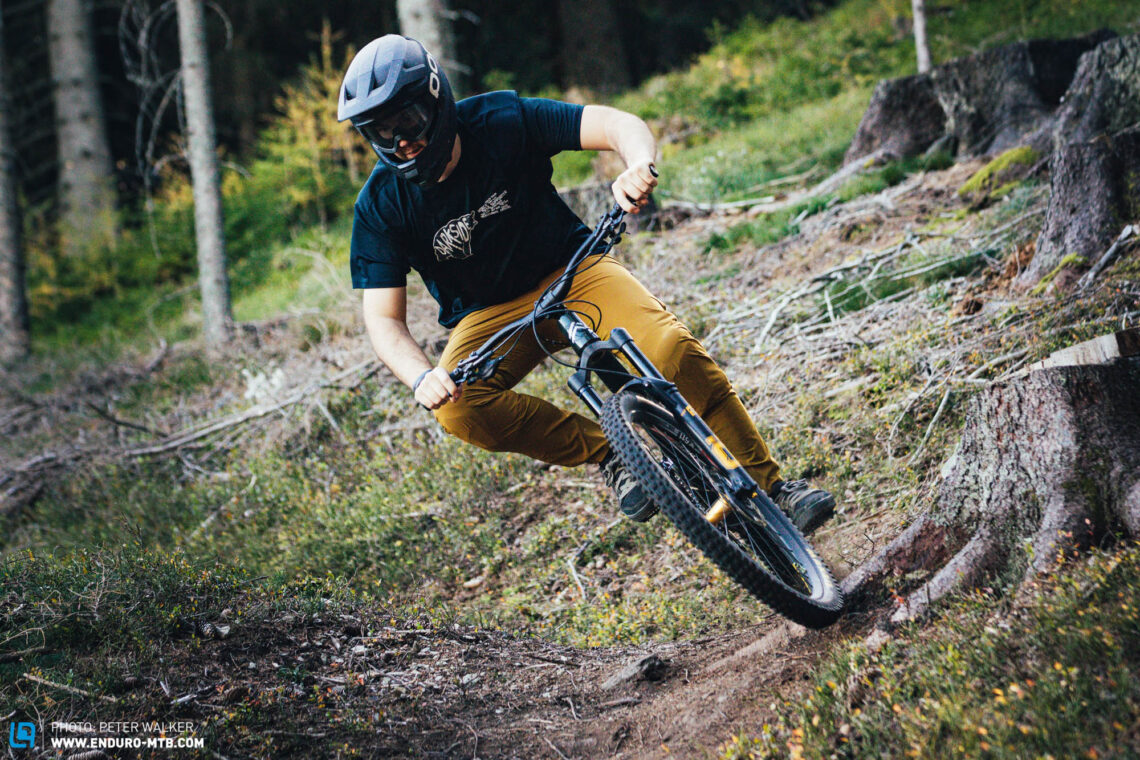
Conclusion
The Claymore is the enduro bruiser of Scottish high-pivot specialist Deviate. It is only available as a frameset, which entails a custom build or a purchase through a third-party dealer. The elegant frame is a real eye-catcher and crammed with clever details, turning heads on the trail. Overall, the Claymore is a nimble and precise enduro bruiser that comes to life with experienced riders.
Tops
- Unique and rare
- Well-thought-out high pivot frame
- Precise and nimble
Flops
- Dropper post cable rattles
- Requires an experienced rider
You can find out more about at deviatecycles.com
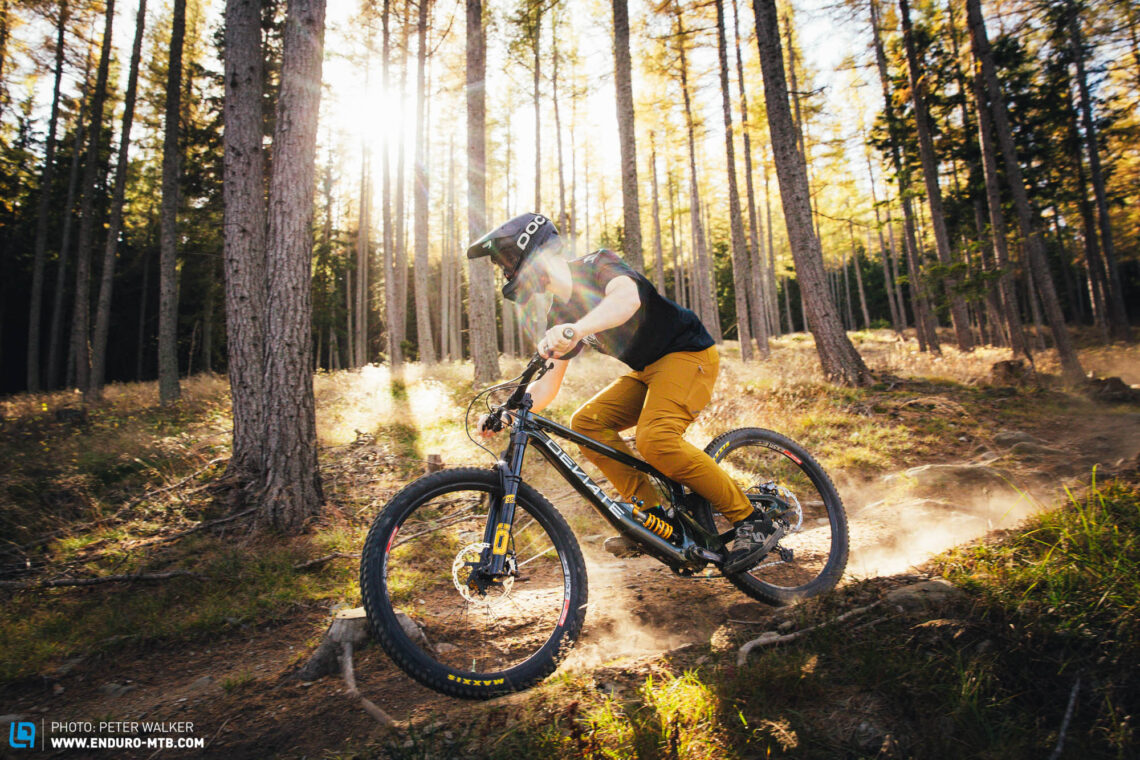
The test field
For an overview of the test fleet head to the group test: The best enduro bike of 2023 – 14 models in review
All bikes in test: Canyon Strive CFR 8 (Click for review) | Deviate Claymore | Hope HB916 (Click for review) | Intense Tracer 279 S (Click for review) | MERIDA ONE-SIXTY 8000 (Click for review) | Mondraker Carbon Foxy RR (Click for review) | Norco Range C1 (Click for review) | Santa Cruz Megatower X01 AXS RSV (Click for review) | Santa Cruz Nomad X01 AXS RSV (Click for review) | SIMPLON Rapcon 170/165 (Click for review) | SIMPLON Rapcon Pmax TQ 170/165 (Click for review) | Specialized Stumpjumper EVO Elite Alloy (Click for review) | Yeti 160E T1 (Click for review) | Yeti SB160 T3 (Click for review)
